Actually… why did a US spy plane impersonate a Malaysian aircraft on South China Sea?
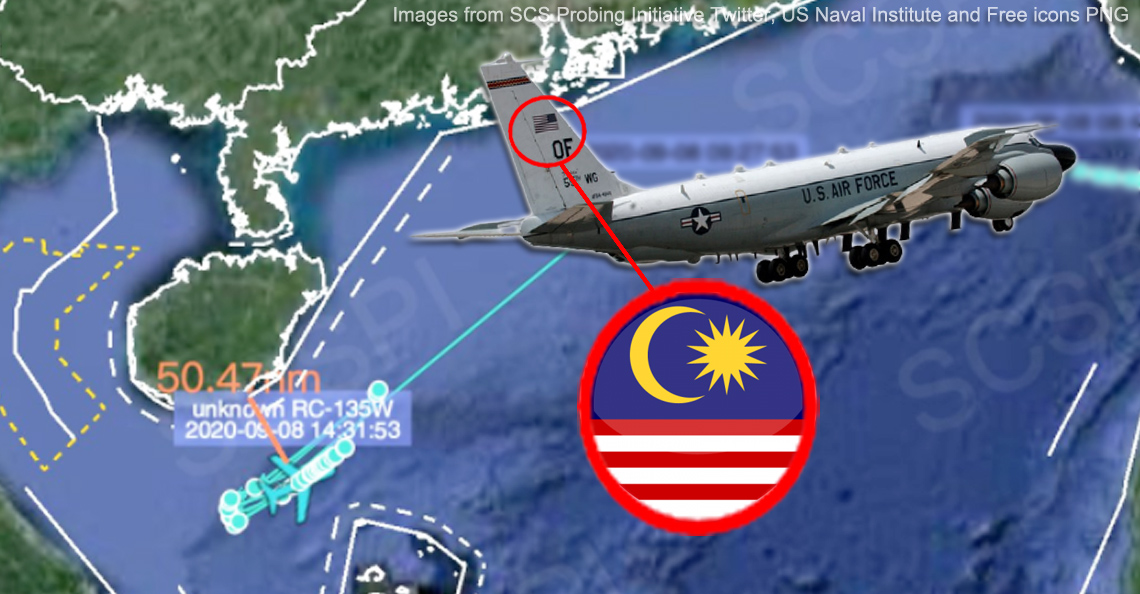
- 1.1KShares
- Facebook905
- Twitter8
- LinkedIn8
- Email13
- WhatsApp16
Recently, there was a strange sighting over the South China Sea.

Although the aforementioned sighting wasn’t exactly a birdplane (or whatever you call it), Chinese think tank SCS Probing Initiative claimed that it saw a US spy plane impersonating an unknown… Malaysian aircraft?!
In its tweet, SCS Probing Initiative claimed that it noticed a US spy plane that was flying above the South China Sea from the Kadena US base in Japan for a mission. Halfway through the journey tho the plane turned off its transponder (device used to receive radio signal).
“The plane’s International Civil Aviation Organization (ICAO) Mode-S number, a 24-bit identifier assigned to all aircraft and broadcast by onboard transponder, was AE01CE.” – An excerpt from Popular Mechanics.
Suddenly, the think tank noticed an unknown Malaysian plane on the same route, patrolling between Hainan Island and the Paracel Islands. Just in case you don’t know, China claims both islands although the ownership of these islands are still being disputed.
While impersonating other planes – intentionally or not – are uncommon and may be illegal, it’s pretty normal for US spy planes to fly above the South China Sea. In fact, this is not the first time US spy planes have been flying over the South China Sea. In fact, sometime back in 2014…
Malaysia apparently invited US spy planes to fly over the South China Sea?!
Well, that is according to several news sites la…
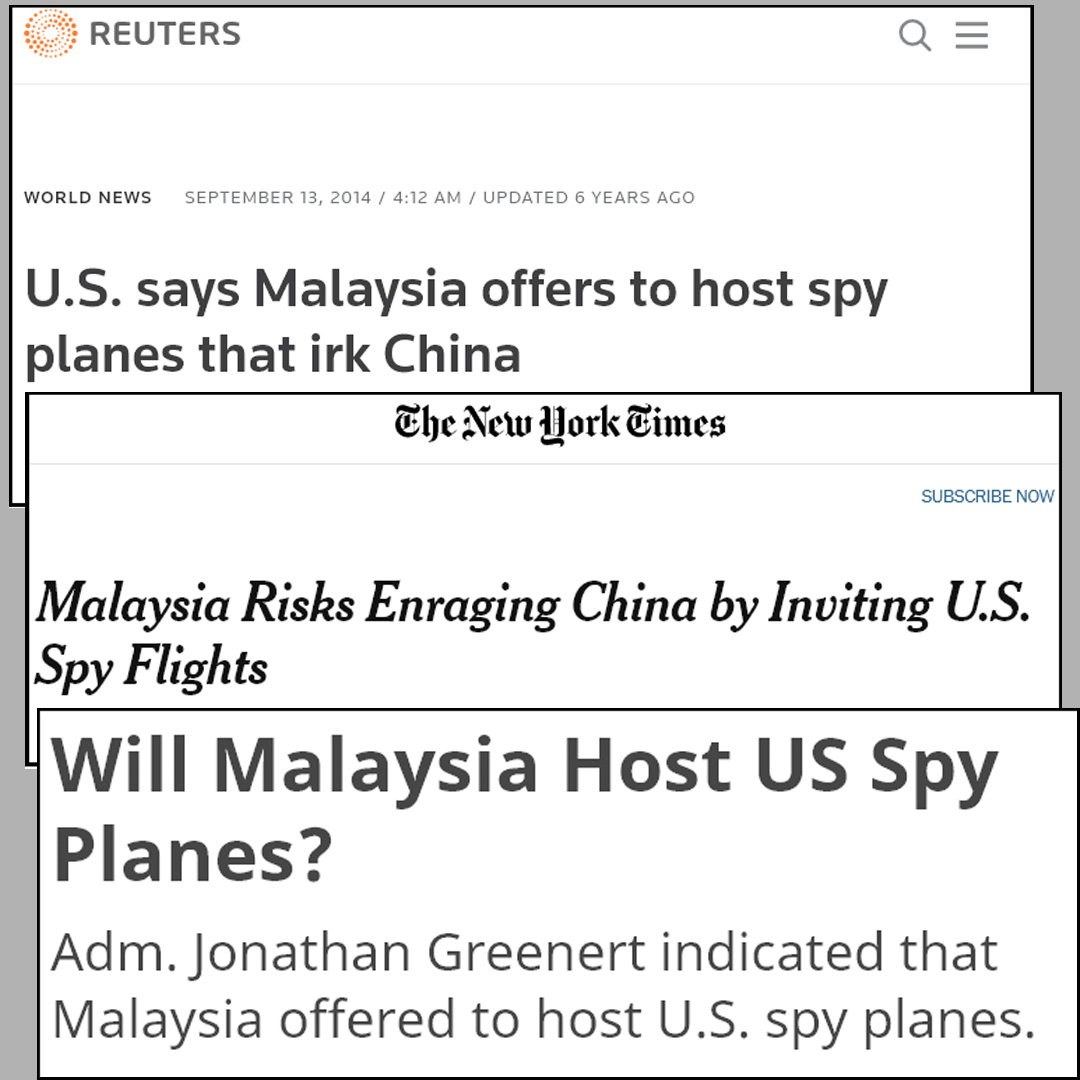
It all began in 2014 when US top navy officer, Admiral Jonathan Greenert mentioned in a forum that Malaysia offered the US military to fly their P-8 aircraft out of East Malaysia for surveillance (read: spy) purposes. He also added that this is due to how close the location was to the South China Sea.
In addition, an unnamed senior Asian diplomat reportedly claimed that Malaysia and the US are already in talks about using Sabah’s air base for this purpose.
Considering Malaysia-China ties, you may wonder why daheck would the Malaysian govt put itself in such an awkward situation?? Well, Ernest Bower, a senior adviser at the Center for Strategic and International Studies, believed that it is Malaysia’s response to China’s claims on James Shoal, which is located 80km away from Malaysia’s coast.

“China has surprised Malaysia by bringing military ships into its waters and tacitly threatening offshore Malaysia oil and gas exploration.” – Ernest, as quoted by The Diplomat.
While Ernest’s belief may sound logical, it still didn’t quite make sense why Malaysia would purposely wanna mess with China like that. In fact, when then Defense Minister, Hishamuddin Hussein was asked whether there was such an agreement, all he replied was…
“Not true.” – as quoted from The Malaysian Insider.
So, the claims that Malaysia allegedly invited US spy planes to its air base are pretty much fake… or rather, it was taken out of context. See, what Jonathan actually said at the forum was plans to nurture future opportunities to help Malaysia in responding to emerging issues. And one such example was when the US helped Malaysia in MH370’s search operations.
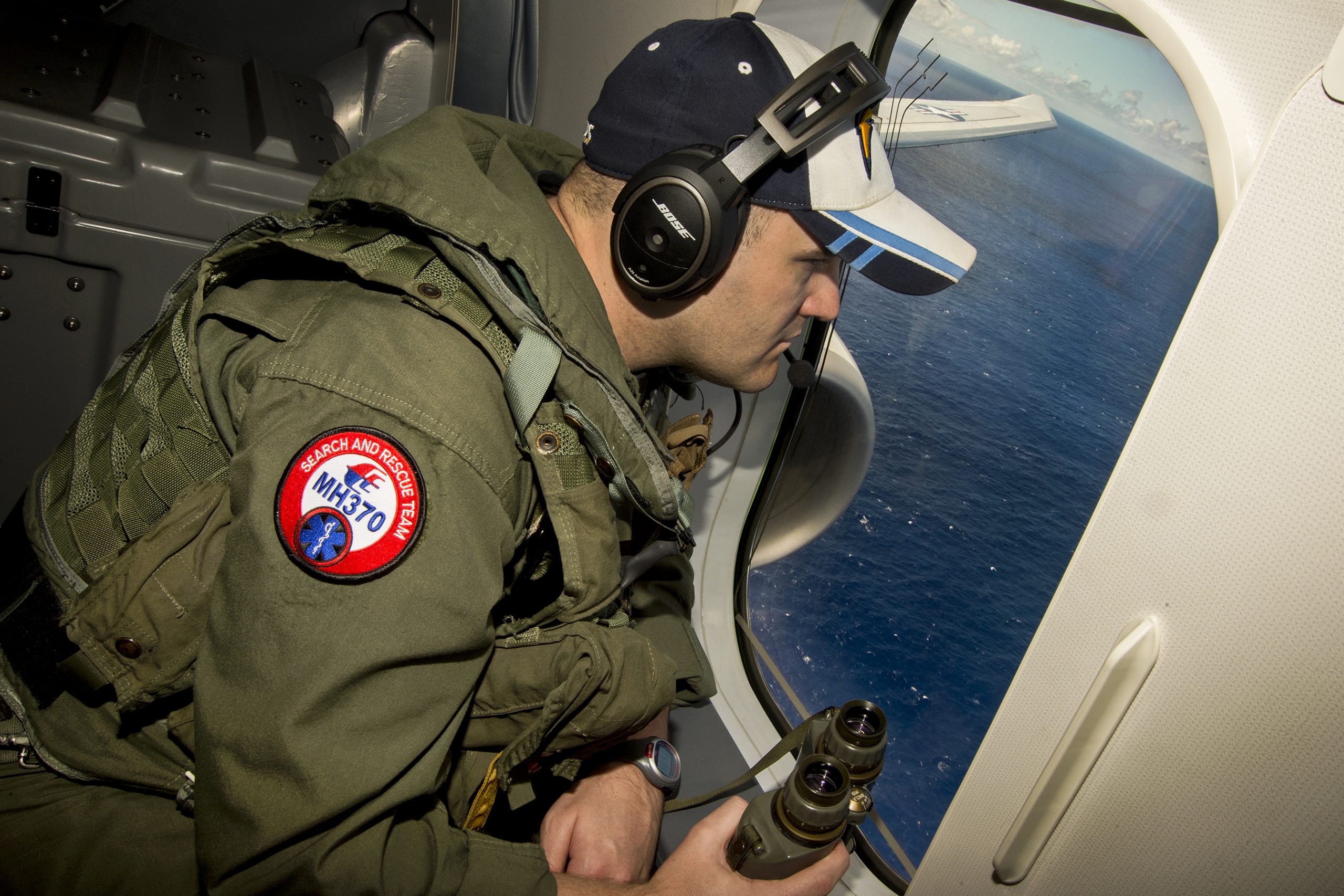
So why did these news sites take Jonathan’s quote out of context? Well, imagine this. If you’re an American, it might be nice to read how your country is helping Malaysia to counterbalance China when the latter is maneuvering its ways into the Malaysian waters.
But that doesn’t mean that US spy planes have only flown in and out of the Malaysian air space in the MH370 search operations. They have.
But Malaysia doesn’t normally conduct spy exercises with countries other than…
…the UK, Australia, New Zealand and Singapore. And that’s because all these countries have a a defence relationship that was formed based on a series of multi-agreements.
Together, they’re known as the cool kids Five Power Defense Arrangement (find out about them more here) and they would would normally conduct military exercises together.
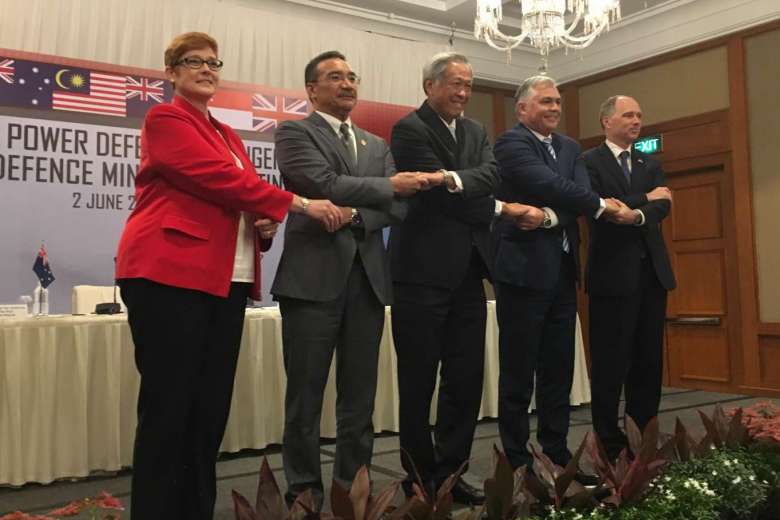
However, countries that are not part of this group like the US would require a permission to conduct any military exercises and missions that would be assessed based on each cases. And Malaysia would only permit these exercises and mission based on two things – capacity to accommodate the request and timing.
According to Vice Adm. Robert Thomas, Commander U.S. 7th Fleet, these military cooperation happened because countries like the US do not have formal treaty with Malaysia.
“There’s no formal treaty with respect to Malaysia as far as military operations. In fact, we conduct operations with the Malaysian military on a case-by-case basis, when permission is granted.” – Robert, as quoted by The Diplomat.
For example, when US’ navy ship was travelling through the Malaccan straits in 2013, it had no plans to conduct any missions or exercises. But upon reaching Malaysia, it decided to have discussions and briefings besides offering Malaysian defense officials to see the US’ Marines capabilities. Malaysia has accepted this offer as it has the capacity and time to do so.
Another example would be when French troops requested to conduct an amphibious landing exercise (you can watch how they do that here) to the Malaysia’s Joint Force Headquarters (JFHQ) but was rejected because it was tied up with another exercise with the US. The French were then directed to the Malaysian Army Headquarters who could accommodate the request at the moment.
See, the US has been involved in these kinda cooperation with Malaysia many, mannnyyyy times before la. And one reason it was keen in doing this is to show off its military capabilities to the Malaysian military since Malaysia has always required a long-range maritime patrol aircraft like the US’ P-8 aircraft.
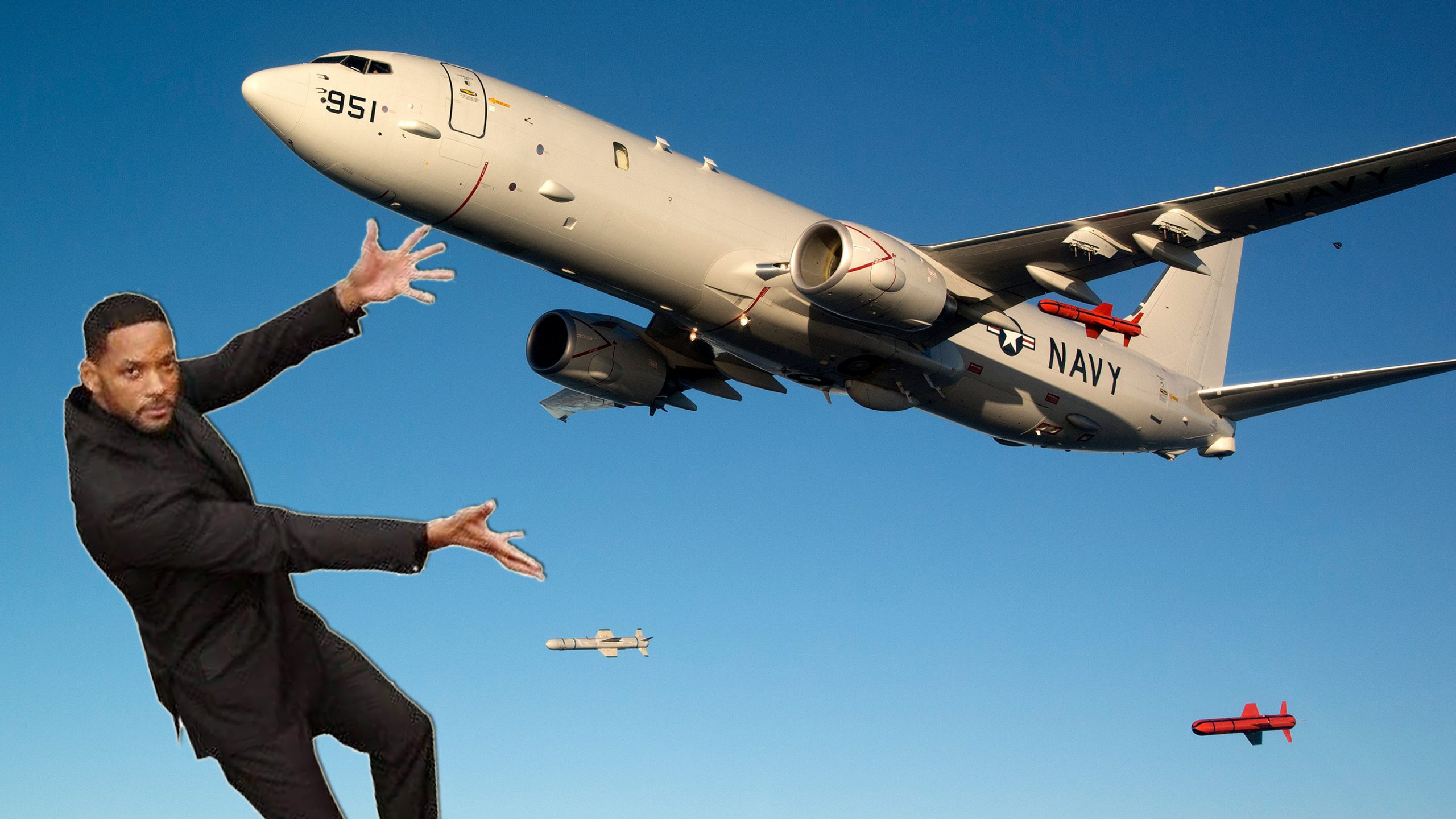
In fact, the US had always been so loud on its presence in Malaysia and near the South China Sea although its action may impose danger to civilian aircraft and despite countless of warnings given by China in the past. But US said it doesn’t really have plans to for a permanent military presence in Malaysia.
This may be why, coming back to today’s issue, the bigger question that still lingers is…
Why did the US spy aircraft disguise itself as a Malaysian plane?
Well, at the time being, there is no direct answer to this. We tried getting in touch with the US embassy to find out more about this but we’re still waiting for a reply.
Thomas Benjamin Daniel, a senior analyst at the Institute of Strategic and International Studies (ISIS, not the terrorist group tho) said it didn’t quite make sense as to why this happened. He also added that the US is more than capable to spy on important information without drawing unnecessary attention to it.
“The US also probably won’t use a transponder broadcasting the RC-135W’s signal. It is an area where they are known to frequently operate. Such flights can also serve as freedom of navigation operations (FONOPs) – which they have no incentive to mask.” – Thomas to FMT.
Others believe that the US spy plane did this to spy on China’s military bases. See, the spy plane known as the RC-135W Rivet Joint is is a converted Boeing 707 jetliner that is designed to collect electronic intelligence to analyse. According to the Air Force, the plane is capable of gathering information and forward them in various format to a wide range of consumers.
“The Rivet Joint’s modifications are primarily related to its on-board sensor suite, which allows the mission crew to detect, identify and geolocate signals throughout the electromagnetic spectrum.” – An excerpt from the Air Force.

And it seems as though the act of disguising as an unknown Malaysian plane could be an honest mistake… tho it may actually be highly unlikely. This may be why SCS Probing Initiative’s tweet may be seen as some sort of warning to the US that the Chinese military can see through their deceptions.
At the end of the day, it remains unclear as to why this mysterious US plane had disguised itself as a Malaysian plane. Or if any of SCS Probing Intiative’s claims are true because, as of now, the Malaysian govt hasn’t come out with any statements rebutting this claim.
- 1.1KShares
- Facebook905
- Twitter8
- LinkedIn8
- Email13
- WhatsApp16



